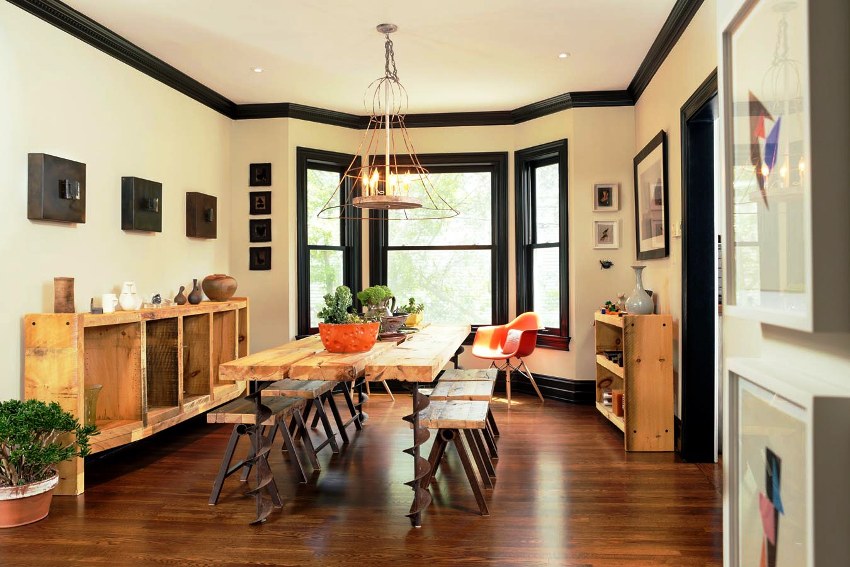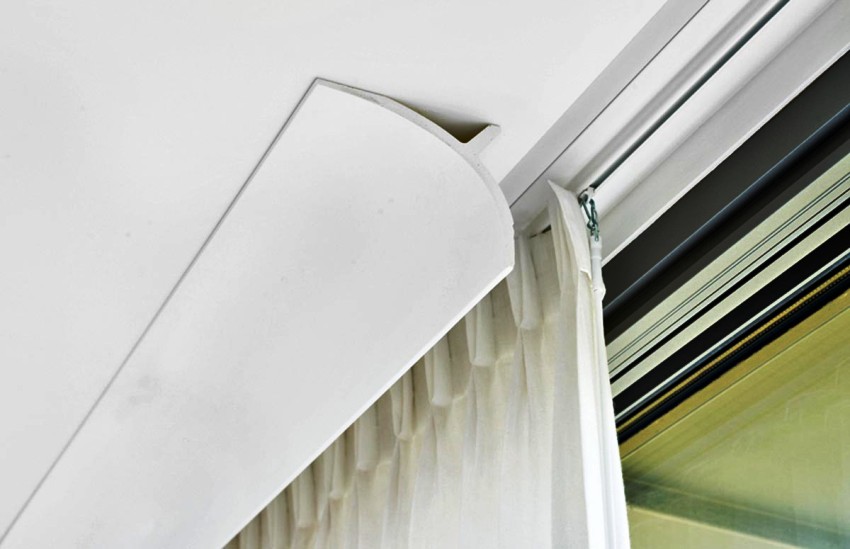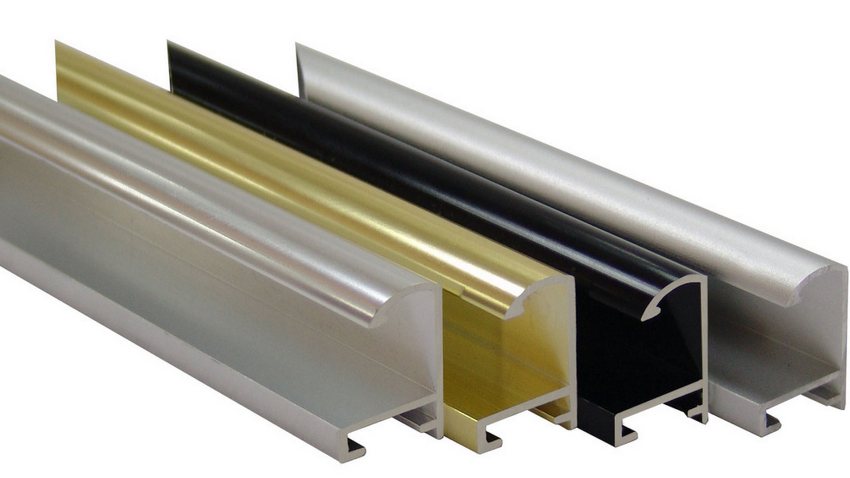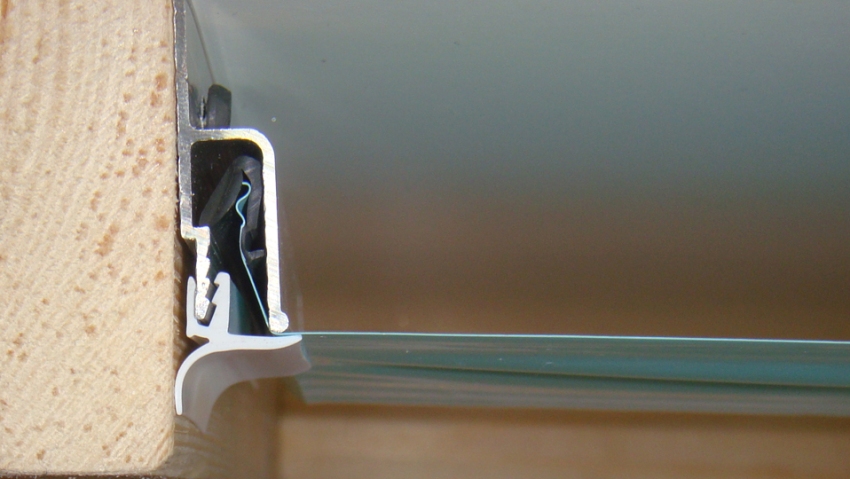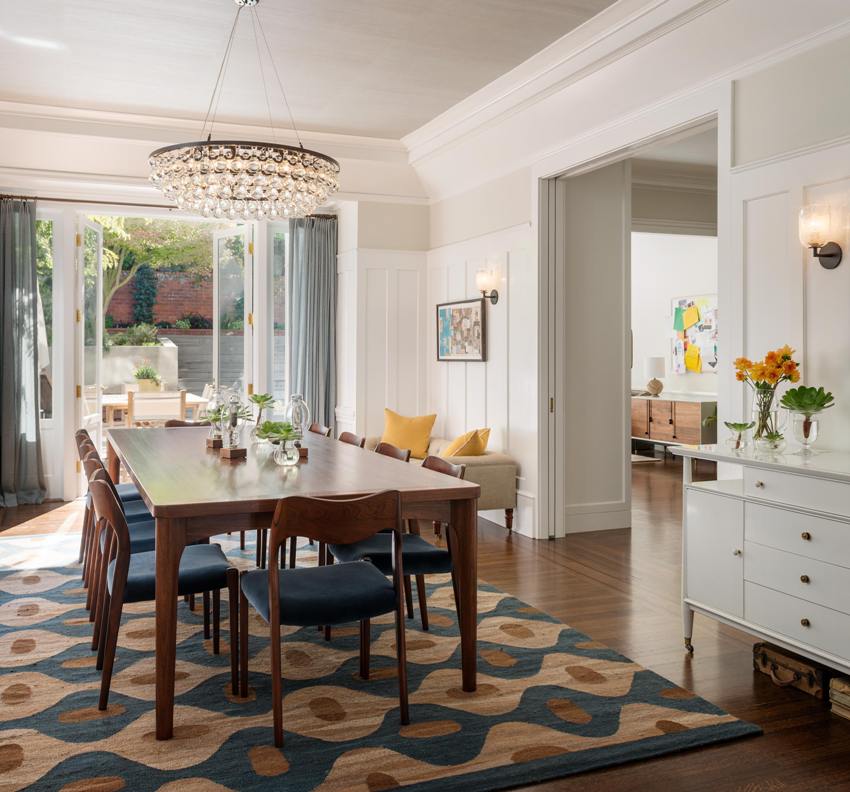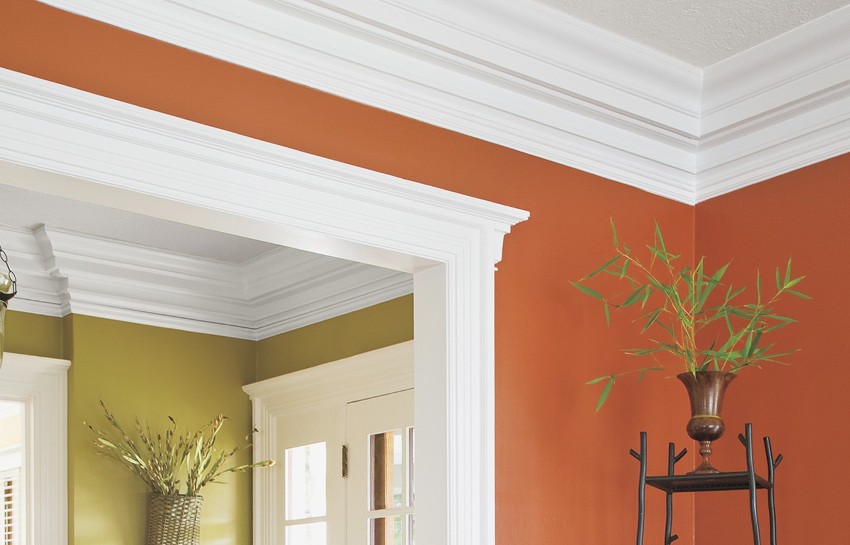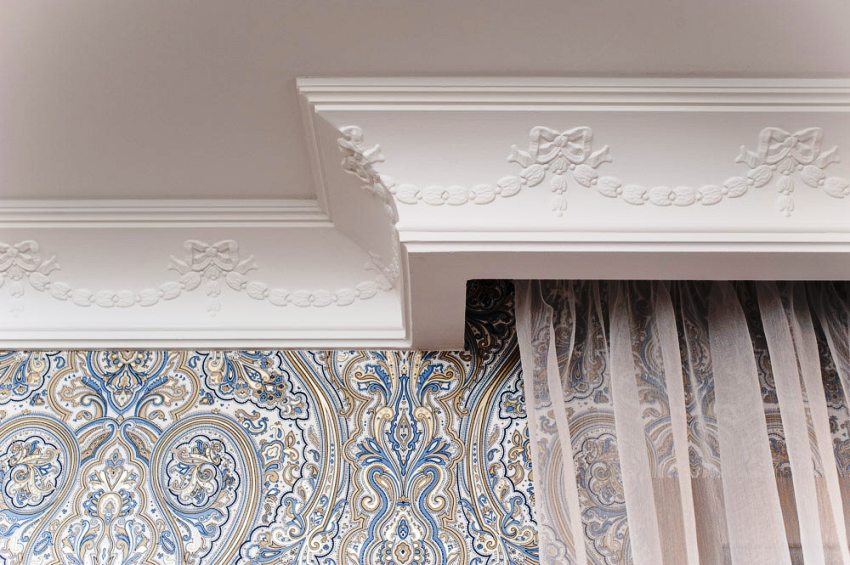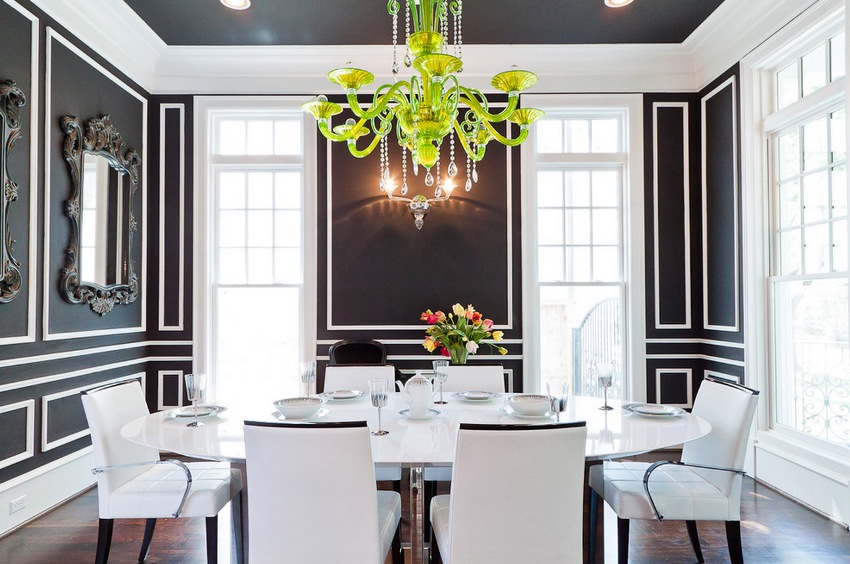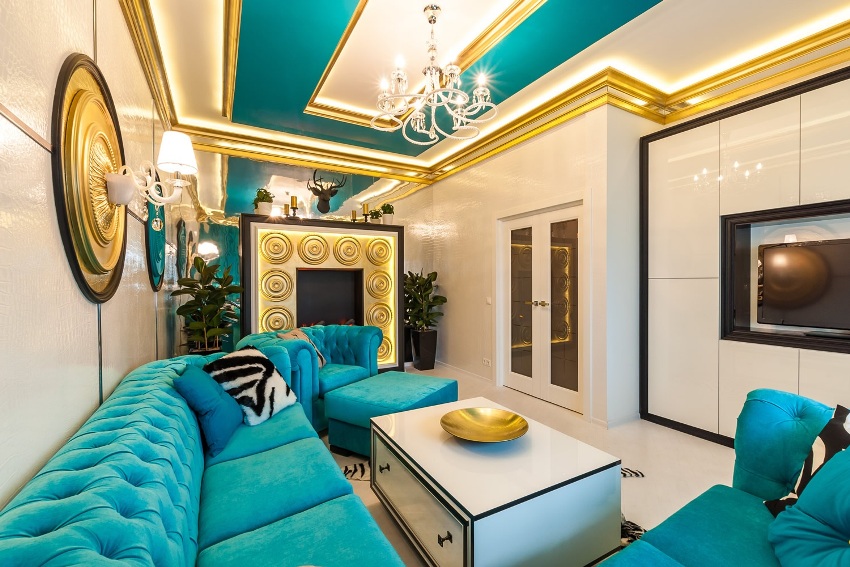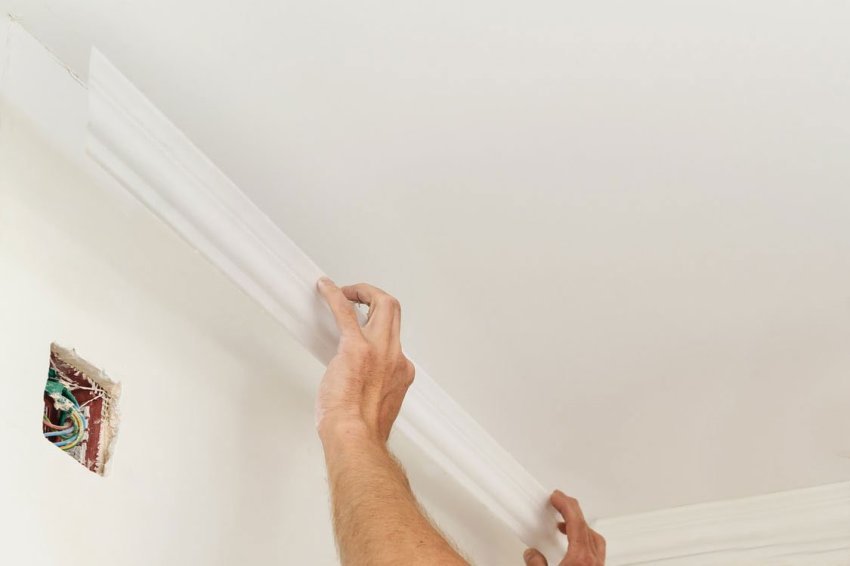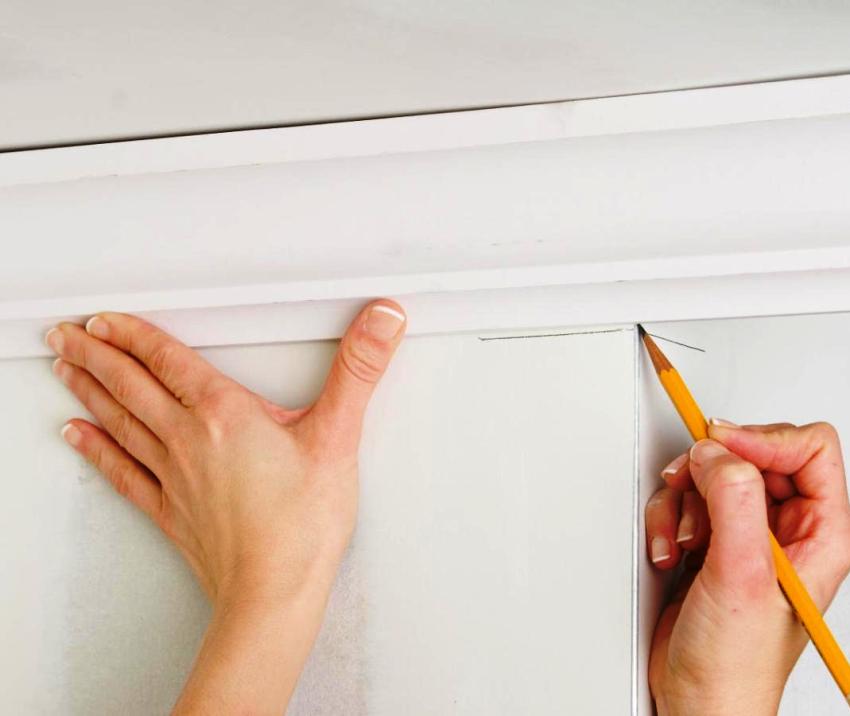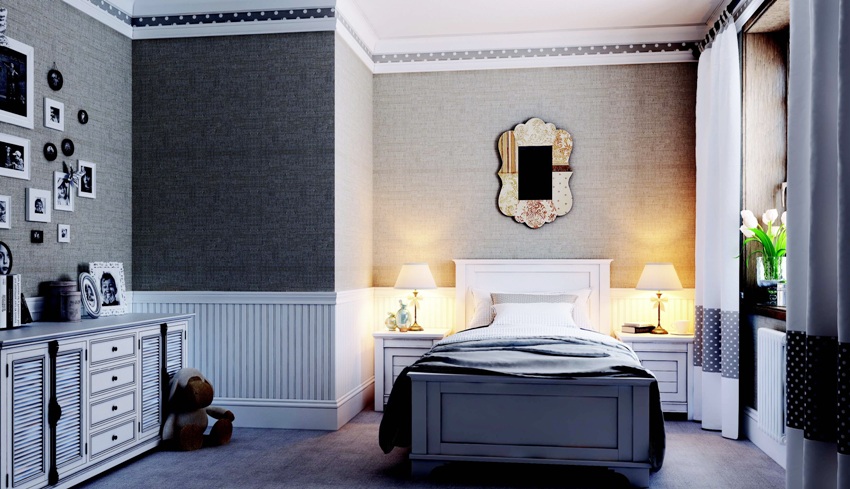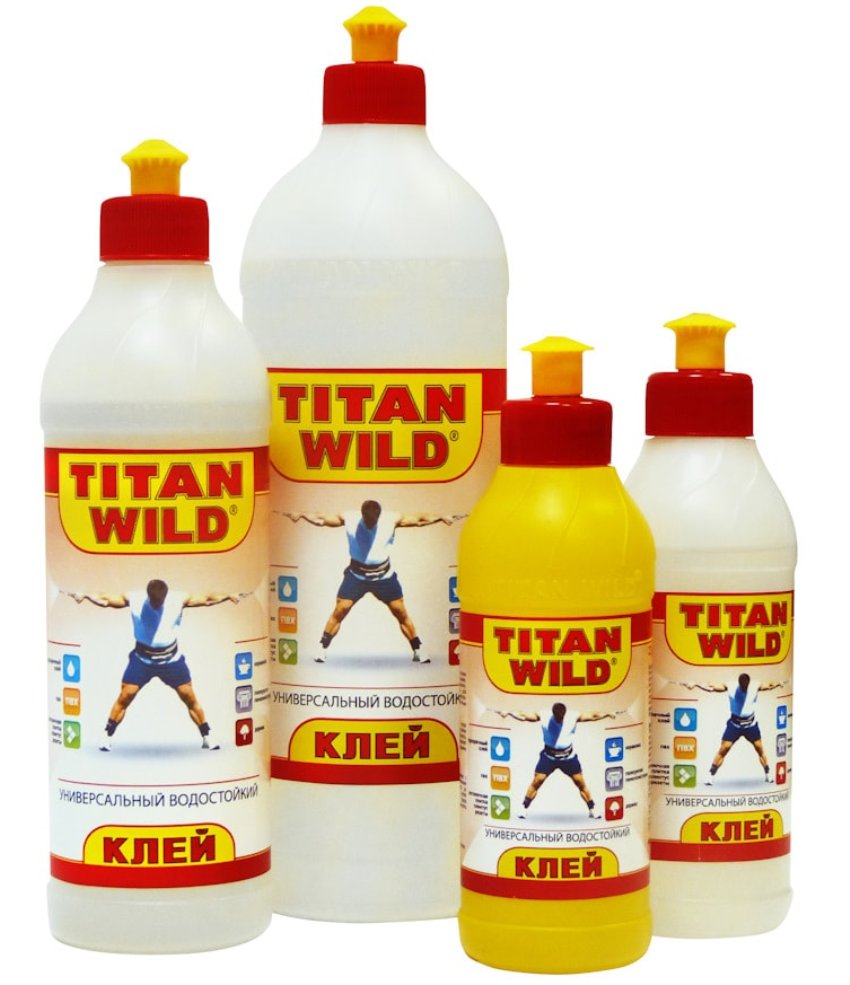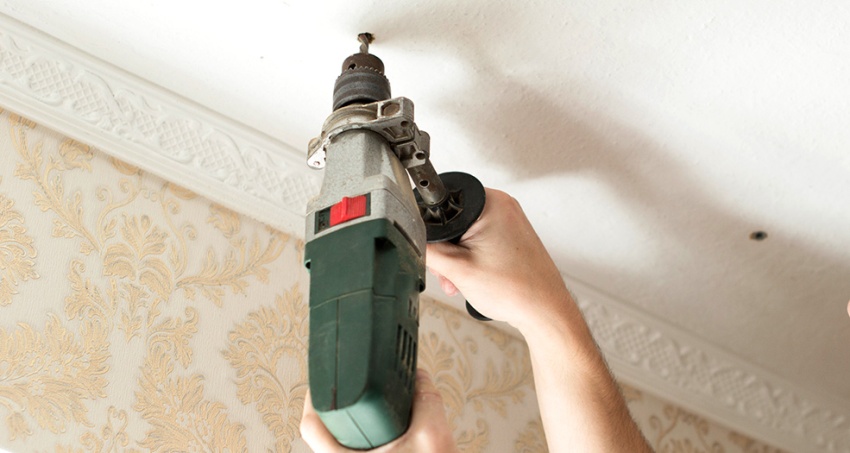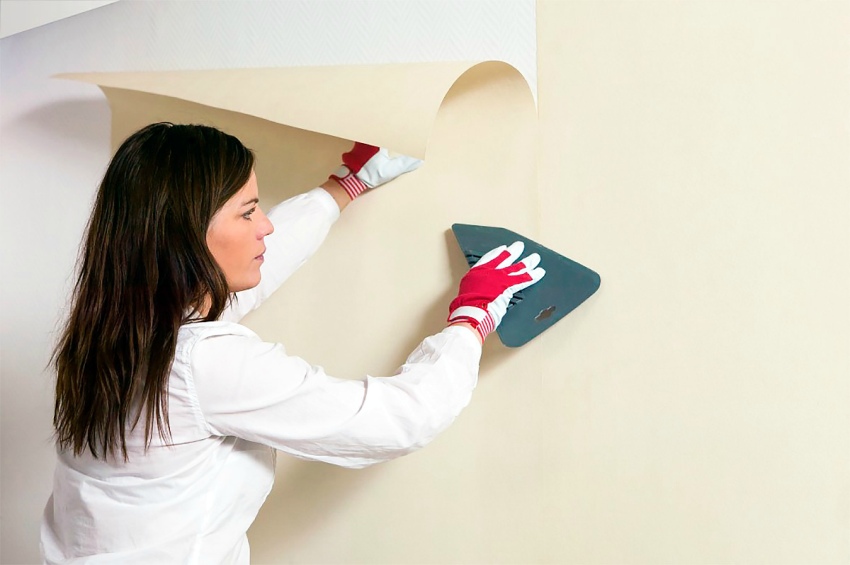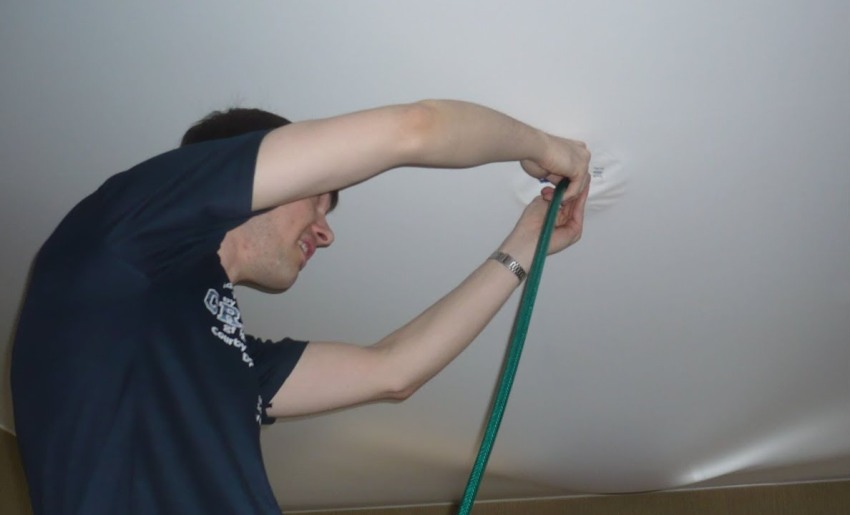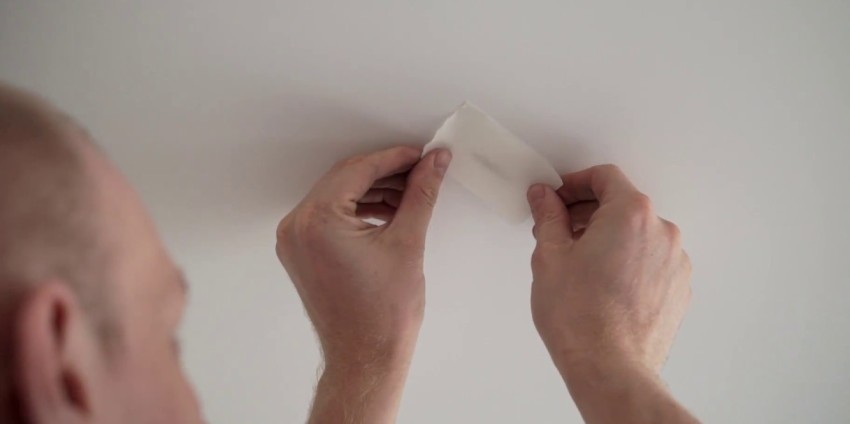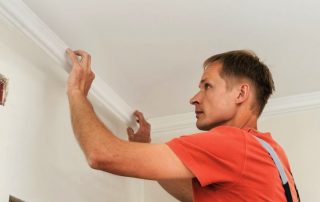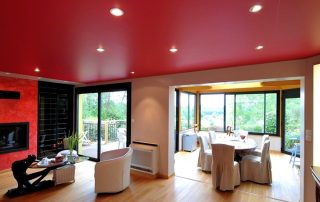Unfinished and unfinished things get in the way, deprive them of comfort, annoyingly recalling their imperfection. This applies to actions, plans, ideas, events, including repairs. A baguette for a stretch ceiling gives completeness and decoration to the room. Without it, the joints of the walls and ceiling surface look sloppy. And the film without a frame remains just a canvas, and not part of the interior composition.
Content [Hide]
- 1 Everything for stretch ceilings: basic structural elements
- 2 What is a decorative ceiling molding and how is it used
- 3 Types of material for making ceiling baguettes
- 4 Options for backlit stretch ceiling baguettes
- 5 DIY installation of a baguette for a stretch ceiling
- 6 How to choose a ceiling molding for stretch ceilings
- 7 A baguette for a stretch ceiling: what glue to choose for fixing
- 8 How to fix a stretch ceiling from a cut with your own hands
- 9 How to remove a stretch ceiling with your own hands and put it back
Everything for stretch ceilings: main structural elements
The ceiling is one of the most important areas of a room in interior design. It cannot be moved, covered with textiles, supplemented with a flowerpot or pots, if the appearance is not entirely satisfactory. Thoughtful design is embodied in reality - and the result is not subject to correction.
The most common problems with ceilings are surface irregularities and perimeter lines, crumbling plaster, protruding seams ... All such flaws are more noticeable when artificial lighting is on. There is a way that solves the above problems - the installation of a stretch ceiling.
The name itself indicates the main technology of the stretch ceiling device. It consists of a frame made of profiles and a canvas that is stretched. Quite often, profiles are called baguettes. This double definition is somewhat justified. A baguette is a profiled or smooth strip. The profile resembles a bar.
The frame is made from special profiles on the walls or on the ceiling. Baguettes have a shape that allows you to put a canvas in them and, using additional elements, firmly fix it. The canvas can be made of polyvinyl chloride or synthetic fabric with various additives that provide strength and decorative effect.
Stretch ceiling baguettes can also be made from different materials.These are mainly metal and PVC products. The profiles have different technical and operational characteristics, as well as the price difference.
Features of aluminum baguettes for stretch ceiling
Metal baguettes for stretch ceilings are made of aluminum. It is a lightweight and durable metal that allows reliable structures to be mounted. Aluminum baguettes for stretch ceilings have the following positive characteristics:
- the metal is resistant to corrosion;
- the frame can withstand heavy loads;
- products do not deform over time;
- do not respond to temperature changes;
- baguettes have an affordable price.
Depending on the place of attachment, metal profiles are divided into three types:
- wall;
- ceiling;
- universal.
There is also a division according to the method of fixing the tensioning fabric. There are harpoon, wedge and clip systems. Some of them require the use of additional elements. With the harpoon system of attachment to the canvas, specific loops are welded along the entire perimeter. With the wedge method, a glazing bead is used, which performs the function of a wedge. The clip method is characterized by the placement of one of the profile planes at an obtuse angle with respect to the other. This position allows the web to snap into place.
If you try to compare the price of aluminum moldings for stretch ceilings with the cost of plastic profiles, then the latter have it much lower. In general, the price of metal types with excellent performance characteristics is quite acceptable. For example, a baguette with a harpoon system can be purchased for 220 rubles apiece (3.5 m). A profile for a "floating" ceiling costs 310-350 rubles.
Important! It is not recommended to fix the aluminum profile to surfaces with significant irregularities: a large gap forms between the wall and the ceiling. If the decision to install such baguettes is made, the defects must be eliminated.
PVC baguettes for stretch ceilings: advantages and disadvantages
It should be noted that plastic baguettes have not been as popular as metal ones for a long time. Most likely, the stereotype worked: everything metal is stronger. And they appeared much later, when many specialists mastered the skill of making their aluminum frames. Polymer profiles are also characterized by sufficient durability.
Plastic moldings for stretch ceilings can be fixed in the same standard positions - at the top of the walls and towards the ceiling. As for the direct process of attaching to the wall, these baguettes have two indisputable advantages in comparison with metal ones:
- there is no need to pre-drill holes in the plastic for self-tapping screws;
- the flexibility of the material allows it to fit snugly to the surface of the walls, repeating the existing lines.
Plastic baguettes are much lighter. This greatly simplifies their transportation, especially if large quantities are purchased. Most often they have a harpoon system of fastening the blade, which is the most reliable way of fixing.
It should be noted that the plastic moldings (AP) intended for the ceiling have a height of only 10 mm, which allows you to maximize the size of the room.
The dimensions of baguettes for a stretch ceiling for wall purposes (AM) are up to 30 mm high. Both profile options are suitable for installing the frame in a room up to 50 m².
As for the disadvantages of plastic baguettes, they should include the need to take a frequent step when fixing to the wall (otherwise, under heavy load, the profile will move away from the surface), as well as the possibility of cracking. Although the last flaw is characteristic of poor quality products.Low price and good performance make the plastic profile more and more popular.
Types of baguettes for two-level stretch ceilings
Improvement of models of stretch ceilings and active design improvement led to the emergence of two-level structures. They look interesting, are diverse, and to a large extent decorate the interior. Quite often, such options not only complement the design, but also hide the defects of the ceilings. With the help of canvases located in two tiers, you can hide the differences in interfloor ceilings, the difference in levels between individual parts of the room, visually increase or decrease the height of the room.
To create two-level structures, a special wall or ceiling profile is required. The dimensions of such baguettes (height and width) are larger than the parameters of the usual ones intended for one canvas. The main options for products for creating two-level frames are PP and PCB profiles. The PP 7.5 baguette provides a stepped arrangement of stretch fabrics, creating a distance between them equal to 75 mm.
The PCB profile is used to create complex geometric structures when it is necessary to perform a curved shape. The bending radius can reach 25-35 cm. Such a baguette assumes the creation of a backlight: it has a groove where an LED lamp is inserted.
Helpful advice! If there is no option among the finished products that allows you to make the required line or shape, the baguette can be ordered, both as a separate element and as a complete structure.
The price of baguettes for a stretch ceiling in two levels is 350-400 rubles. for a unit. Custom-made options have a cost 30-40% higher. Ready-made kits for geometrically complex frames can cost from 10 to 35 thousand rubles.
What is a decorative ceiling molding and how is it used
Above in the article, it was a question of baguettes, which are used for stretch ceiling frames. Further - about the baguette as a decorative strip used in the design of stretch ceilings. If in the previous information the name “baguette-profile” was used, then in the following material it will be said about the baguette-plinth.
What is the functional purpose of stretch ceiling baguettes? They allow you to perform several tasks at once:
- Hide minor defects. Under them, the uneven edges of the wallpaper, paint unevenly applied to the walls (which is almost inevitable in the area of the junction of walls and ceiling) are not visible.
- Close the gaps between the stretch ceiling and the wall. Even with the most ideal installation of the frame, they take place.
- Correctly form the corners from the point of view of aesthetics and psychology. The smooth, pleasant lines of the corner parts of the room create a positive attitude and a sense of comfort.
There are different types of skirting boards for stretch ceilings. Baguettes are classified according to the quality of the materials used for their manufacture, according to the features of the forms that allow them to perform additional functions (mount backlights in them). The decorativeness of the design is also of great importance. Baguettes are selected in accordance with the size, color and shape of the ceiling, as well as taking into account the chosen style of the interior of the room as a whole.
Types of material for making ceiling baguettes
The most common material for the manufacture of skirting boards is polystyrene, or rather expanded polystyrene. The price of baguettes for stretch ceilings made of this material is low, this is what largely ensures their popularity. In addition to the low cost, baguettes have a number of undeniable advantages:
- The material is easy to cut.Even after using an ordinary knife on paper, the cut line is smooth, without chipping and chipping.
- Low weight of baguettes. Lightweight planks are easy to fix.
- Any glue can be used for fastening. Exceptions are formulations with acetone (acetone dissolves polystyrene foam).
- Presentable appearance. In visual perception, baguettes are very similar to stucco elements.
Related article:
Profiles for stretch ceilings: types, installation methods
Functional purpose, main types at the place of attachment and method of fixing the canvas. Typical profile sizes. Knauf products.
Less than foam, but polyurethane baguettes are also quite popular. They are denser, stiffer and heavier. They are often used in rooms with high humidity - they are absolutely resistant to temperature extremes and waterproof. Another indisputable positive quality is the low degree of flammability. The polyurethane is extinguished after the fire source has ceased. This property is provided by flame retardant additives in the composition of this plastic.
Another type of baguettes for stretch ceilings are plaster strips. The material is expensive, it is more often used when performing elite repairs. High aesthetic qualities are the main advantage. The technical side of installation is quite complicated: the baguettes are heavy, break, and do not tolerate water exposure.
Helpful advice! Once you decide to use plaster moldings, you should choose the size of the planks that will minimize the need for cutting.
Options for backlit stretch ceiling baguettes
Many people refuse classic artificial lighting, when the chandelier is located in the central part of the ceiling. Side lights are installed, LED strip is used. There are interesting options for fastening the tape around the perimeter of the room, capable of creating the effect of a "floating" ceiling, highlighting the space between the canvases in a two-level structure, etc.
In the photo of baguettes for stretch ceilings on the Internet, you can find a lot of lighting methods. Light streams can not only come from under the plinth, falling on the walls (the effect of a "floating" ceiling), but also perform a light contour along the ceiling plane. The curly luminous lines have a special originality.
There are both metal profiles, shaped to fit the LED strip, and skirting boards made of foam, polyurethane and PVC. In order to be able to install the backlight, the main view of the baguette has undergone structural changes: a gutter has appeared on its surface, into which the LED strip is placed.
The use of skirting boards in itself adds to the aesthetics of the ceiling structure. Baguettes supplemented with lighting can significantly change the interior appearance of a room. Considering that certain types of consumables have quite affordable prices and the execution technique itself does not require a high level of professionalism, backlit baguettes are a unique opportunity to create a unique interior.
Installation of a baguette for a stretch ceiling do it yourself
In theory, gluing baguettes is not difficult. In order not to upset the result in practice, you must have a certain set of tools and devices:
- miter box - a special tool that allows you to cut workpieces at different angles;
- hacksaw or construction knife (for cutting planks);
- brush;
- spatula (it is convenient for them to collect extra drops of glue under the baguette);
- clean natural fabric (to remove glue residues).
Before gluing baguettes to a stretch ceiling, make sure that you have purchased the right adhesive.You should not save on this consumable, especially if the baguette is made of plastic.
Important! It is necessary to glue the plinth not to the canvas, but to the wall. Any adhesive will pull together. It is impossible to predict how the PVC sheet will behave in contact with glue. Experiments with stretched film are inappropriate.
You need to apply glue only on the side of the baguette that will be applied to the wall. It is necessary to fix the plinth from the corners. Therefore, before attaching a baguette for stretch ceilings, you need to cut and prepare not only the starting angle, but all the others. Then you need to attach the resulting blanks. If you are satisfied with the docking, you can apply glue and apply to the wall. For a stronger adhesion of surfaces, hold the baguette for 40 seconds.
Instead of cutting out the corners, you can purchase ready-made elements. In this case, installation is easier only at first glance. The fact is that this option has two connections in the area of each corner. If they visually stand out, then this will become an even more noticeable defect than a non-ideal corner joint.
How to choose a ceiling molding for stretch ceilings
What are the criteria for choosing a baguette for a stretch ceiling? First of all, one should be guided by the taste and style in which the room is decorated. The financial issue is also important. Do not be upset if you only have enough funds for the foam option.
It is necessary to take a closer look at the shape, and it is not difficult to give the baguette the desired color. Styrofoam is easy to paint. Considering that the skirting board does not experience practically any mechanical influences, the coating lasts a long time without losing its aesthetics.
Size is an important indicator. Quite often, it is the size of the plinth, especially the width, that affects the perception of the dimensions of the room. If the room is large and the ceiling is high, there is no need to limit the size. In a small room, a wide baguette will seem heavy, it will visually reduce the size of the room.
It will be superfluous to view photos of baguettes on the ceiling on the Internet. Ceiling compositions offered by designers will help you figure out the combinations of colors and shades, and also tell you how to decorate a stretch ceiling in an original way.
For large rooms, it is worth purchasing slats of the maximum length. This will reduce the number of joints. If preference is given to polyurethane products, then here, on the contrary, it is better to purchase short baguettes. Long plastic strips are difficult to glue. To avoid slipping, it is necessary to hold such a baguette for a long time, pressing it against the wall.
Stretch ceiling baguette: what glue to choose for fixing
To ensure a high-quality result, the issue of glue is no less important than the material of manufacture and the shape of the baguettes. Smoothly cut but displaced joints during the gluing process are one of the most common mistakes. And the reason most often is the adhesive composition that does not meet the requirements.
As for gluing baguettes, it makes no sense to raise the question of saving. You can buy expensive glue, but this is not necessary, as there are several options that have been tested by a large number of users for a long time. Liquid nails and "Dragon" glue do their job quite well, especially when fixing foam strips. For polyurethane compounds "Titan" and "Moment" are more effective.
If you carefully consider the photo of ceiling moldings for stretch ceilings, then even with a multiple increase in the image of defects it is impossible to find.This is undoubtedly due to the high-quality adhesive composition and the professionalism of the creators of the structure.
Many people are wondering, and some are even experimenting, whether it is worth gluing the baguettes onto the putty. If you do not go into the intricacies of the process, then you can. But the glue is only applied to one side. And it is very difficult to adjust the thickness of the putty layer. But to prepare glue based on putty is quite acceptable. To do this, mix 1 part of PVA glue and 4 parts of the finishing putty, add water with constant stirring, bringing the composition to the consistency of sour cream. Let it brew for 10-15 minutes.
Important! It is necessary to use such an adhesive composition for 1-1.5 hours.
When to glue the wallpaper: before the stretch ceiling or after its installation
Looking through the recommendations on fixing baguettes, it is impossible to find the answer to the question of what they are doing ahead - stretch ceilings or wallpaper. The conclusion suggests itself that it all depends on the type of wallpaper. To get the most accurate answer, it is worth considering several situations.
Modern wallpapers generally have a rather voluminous texture. You need to cover the walls with wallpaper, and then mount the ceiling. This sequence is due to the fact that performing repair work after stretching the canvas creates conditions under which the ceiling film is easily damaged. Then you need to glue the skirting board to hide the gap between the ceiling and the walls and the unevenness of the upper cut of the wallpaper. Theoretically logical. And how will a skirting board glued to the bulges of the wallpaper look like in practice?
Option two. Wallpaper paper, thin, smooth. The walls are covered, the ceiling is mounted, then the plinth is glued. What will be the result in this case?
Situation three. The ceiling is stretched, the plinth is attached, the wallpaper is glued. The work is done carefully and carefully. The main thing is to properly cut off the upper edge of the wallpaper, that is, remove the excess. Be sure to use a special knife.
Fixed baguettes for curtains, for a stretch ceiling (the photos clearly demonstrate this) seem to be glued from above. There is only one way to provide such an effect: cut the trellises so perfectly that not even a hint of unevenness remains. What result can you expect?
Returning to the beginning, it should be stated that there is no definite answer to the question of the sequence of work execution. Although many experts recommend stretching the ceiling after gluing the wallpaper. But what about the skirting board?
How to fix a stretch ceiling from a cut with your own hands
Mechanical damage to a stretch ceiling is a common phenomenon. The reasons for this defect:
- damage with a spatula when gluing a ceiling molding;
- being hit by arrows, darts or other similar objects during children's play;
- careless movement of furniture;
- installation or dismantling of window structures.
These are the most common reasons, there may be others, due to the purpose of the room where the stretch ceiling is installed.
Attention! It is impossible to close up the cut of the tensioning blade on your own so that it is not noticeable.
How to seal a hole in do-it-yourself stretch ceiling? Construction tape can help here. They can fix a cut equal to 1-2 cm. This must be done carefully, pulling the edges of the canvas at the break. You can use plastic cups: cut out strips about 1 cm wide, apply superglue and glue the defect.
Such activities will prevent a small cut from turning into a huge hole. If there are no complaints about the aesthetics of the canvas after its "treatment", you can leave it that way.If you want to have an ideal ceiling, you will have to contact specialists. They can apply several types of restoration:
- Apply a patch from the inside out. If the edges are neatly joined together, the seam will be almost invisible.
- In case of damage in the corner or close to the baguette, partial dismantling of the canvas, its additional heating and stretching is possible.
To correct the defect, it is recommended to contact the ceiling installers.
how remove the stretch ceiling with your own hands and put it back
With self-installation, dismantling the stretch ceiling will not cause problems. But if the design was carried out by specialists, difficulties will arise. First of all, you need to understand what kind of fastening the baguette of the stretch ceiling has, that is, the profile. The fact is that there are fixation options in which it is impossible to remove the canvas without damage.
Helpful advice! If the installation of the tensioning web is carried out by specialists, it is imperative to inquire which profile is used, whether dismantling is possible if necessary.
You should start removing the ceiling by removing the insert, which is located between the wall and the ceiling. The seam is not easy to find because the element is hidden. It is worth looking in the corner. Then the hardest part is to remove the canvas. This should be done with utmost care. It is better to have an assistant who will heat the film with a heat gun. This should be done without fail, otherwise you cannot do without damaging the canvas.
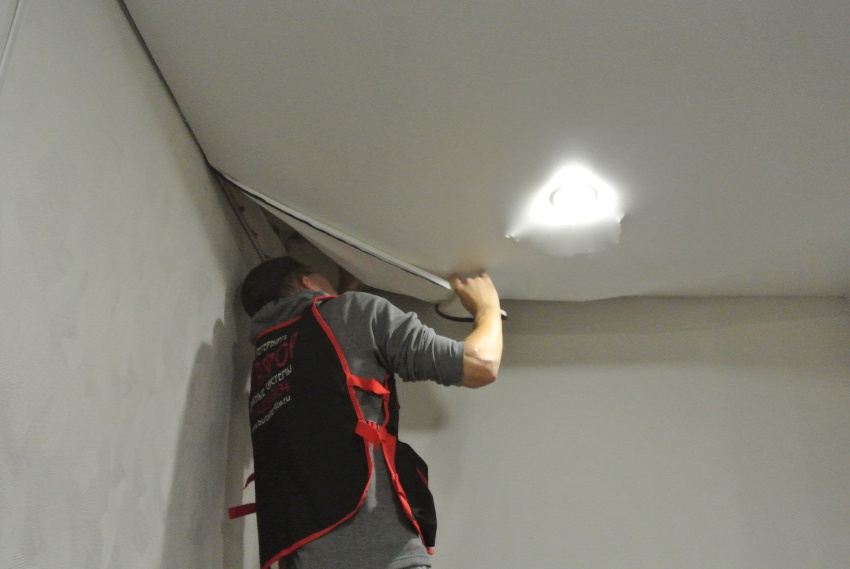
Removing the ceiling should be started by removing the insert, which is located between the wall and the ceiling
If the ceiling is rectangular, it is better to remove the canvas from the corner. Do not touch unheated areas. If a wedge system was used, remove the glazing beads. With the harpoon attachment method, it is required to carefully remove the canvas, that is, to release the film. "Clips" need to be unclenched, gradually pulling the canvas.
Above is information on how to remove part of the stretch ceiling. You can install back and return the structure to its former beauty in the same way that was used when installing the ceiling. Installation and dismantling is possible only with the use of quality materials and adherence to performance technology.
From a technical point of view, a baguette does not play a major role in the construction of a stretch ceiling. But if you scornfully treat his choice and fixation, then you can nullify all the efforts made earlier and spent funds. Sloppy joints and uneven corners will dominate, reducing the aesthetics of the ceiling even when the canvas is perfectly tensioned.

